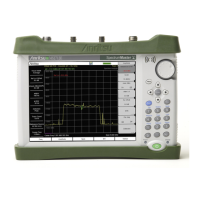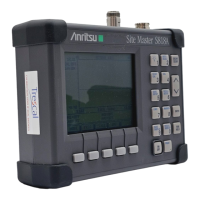2-3 Making Spectrum Analyzer Measurements Spectrum Analyzer
2-6 PN: 10580-00349 Rev. H Spectrum Analyzer MG
“Inverted” means that the IF is spectrally inverted from the input (as the input
frequency goes higher, the IF goes lower).
“Not Inverted” means that the IF is not spectrally inverted (as the input frequency goes
higher, the IF goes higher).
You need to take frequency inversion into account when processing the IF signal. Assuming
that the IF has been processed to yield I and Q data, inversion is easily done by swapping
IandQ.
A residual frequency offset of the IF may exist compared to the RF due to the resolution of the
first and second local oscillators, as well as the calibration of the IF filters. This offset is
usually on the order of several kHz, but may be up to 10 kHz or so if the narrowest IF filters
are selected. To determine the residual offset, you need a second spectrum analyzer or a
frequency counter.
1. Attach a signal source (or antenna) to the spectrum analyzer and set the center
frequency to the center of the signal being received.
2. Press BW then Zero Span, and then press Zero Span a second time to turn on the
IF output.
3. Attach a second spectrum analyzer to the IF output and set the center frequency to
140 MHz. Set the span of the second spectrum analyzer to 100 kHz or less to have the
resolution needed to be able to measure an offset that may be 25 kHz or less.
4. Measure the frequency of the IF signal to see how far the signal is offset from 140 MHz.
Table 2-1. Mixer Bands and LO Relation to RF Frequency
Band Low RF MHz High RF MHz Local Oscillator Side Output Spectrum
1 0 5350 High Inverted
2 5350 9200 High Inverted
3 9200 13000 Low Not Inverted
4 13000 16500 High Inverted
5 16500 20000 Low Not Inverted
6 20000 32800 High Inverted
7 32800 43000 Low Not Inverted
ООО "Техэнком" Контрольно-измерительные приборы и оборудование www.tehencom.com
